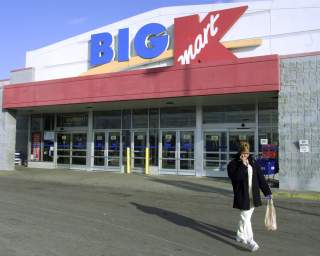What Happens When Department Stores Die?
The retail apocalypse goes on.
Five years ago, the sad goodbye to an icon began when Macy’s decided to close its flagship location in downtown Pittsburgh. The void, alas, still remains.
For most of that building’s storied 110-plus-year-old life, until Macy’s took it 15 years ago, it was Kaufmann’s department store: a place where parents, whether they were working-class or well-to-do, took their babies to get fitted for their first pair of shoes; or purchased their communion dress, prom dress, wedding gown, back-to-school clothes; or bought them the sheets, furniture, toasters, pots, and pans they needed to start their adult lives.
It was also where young and old, rich or poor, went to the Adoria Beauty Salon to have their hair styled for the very first time. Or where they went to have their first special lunch with their parents or grandparents at Tic Toc restaurant. And maybe even where they have their first job.
It was 1.2 million square feet of community, where people came together no matter their age or where they were from to experience dozens of rites of passage.
Pittsburgh wasn’t the only place to have this experience; there was Higbee’s in Cleveland and Hudson’s on Woodward Avenue in Detroit, the latter of which was very similar to Kaufmann’s, where any working-class child could walk along its marble floors; gaze up at the sparkling chandeliers; absorb the smells and sounds of the flower shops or candy shops; and drink from the ornate water fountains.
Despite the affluent adornments, Kaufmann’s was everyone’s department store, a place to inspire and aspire.
Your mother may have bought your clothes in the bargain basement, but as your family browsed the multiple floors and ascended on the escalators, you could imagine shopping one day for one of those sharply tailored suits to wear to work in one of the surrounding downtown office towers.
The absence of these stores from the core of our cities isn’t just about the loss of retail square footage. That is what mayors and politicians always get wrong when people bristle at the loss.
What hurts most is the loss of community and touchstones that brought people from a variety of backgrounds, races, religions, education levels, and income levels. We mourn the fact that we have not replaced them with a new attachment to community.
A 2018 Pew survey showed that roughly 4 in 10 adults “say they are not too or not at all attached to their local community.”
This is a sharp veer away from that thing about us that awed French sociologist Alexis de Tocqueville in the 1800s, who observed with respect our robust habit of forever joining and forming communities, and how we have benefited from them.
As social media becomes a replacement for connection, online communities have proved to be a very weak link to the physical communities that made America stand out for its willingness to shed social barriers and congregate.
That is what places such as Kaufmann’s and Higbee’s and Hudson’s did, explained Ron Fournier, a native Detroiter, former newsman, and current communications expert who returned to help bring his community back together several years ago.
“When Detroit was a lively, thriving brewing city 50 years ago, Hudson’s was the very center of that excitement,” he said.
This article by Selena Zito originally appeared at The Daily Signal. This article first appeared in 2020.
Image: Reuters

